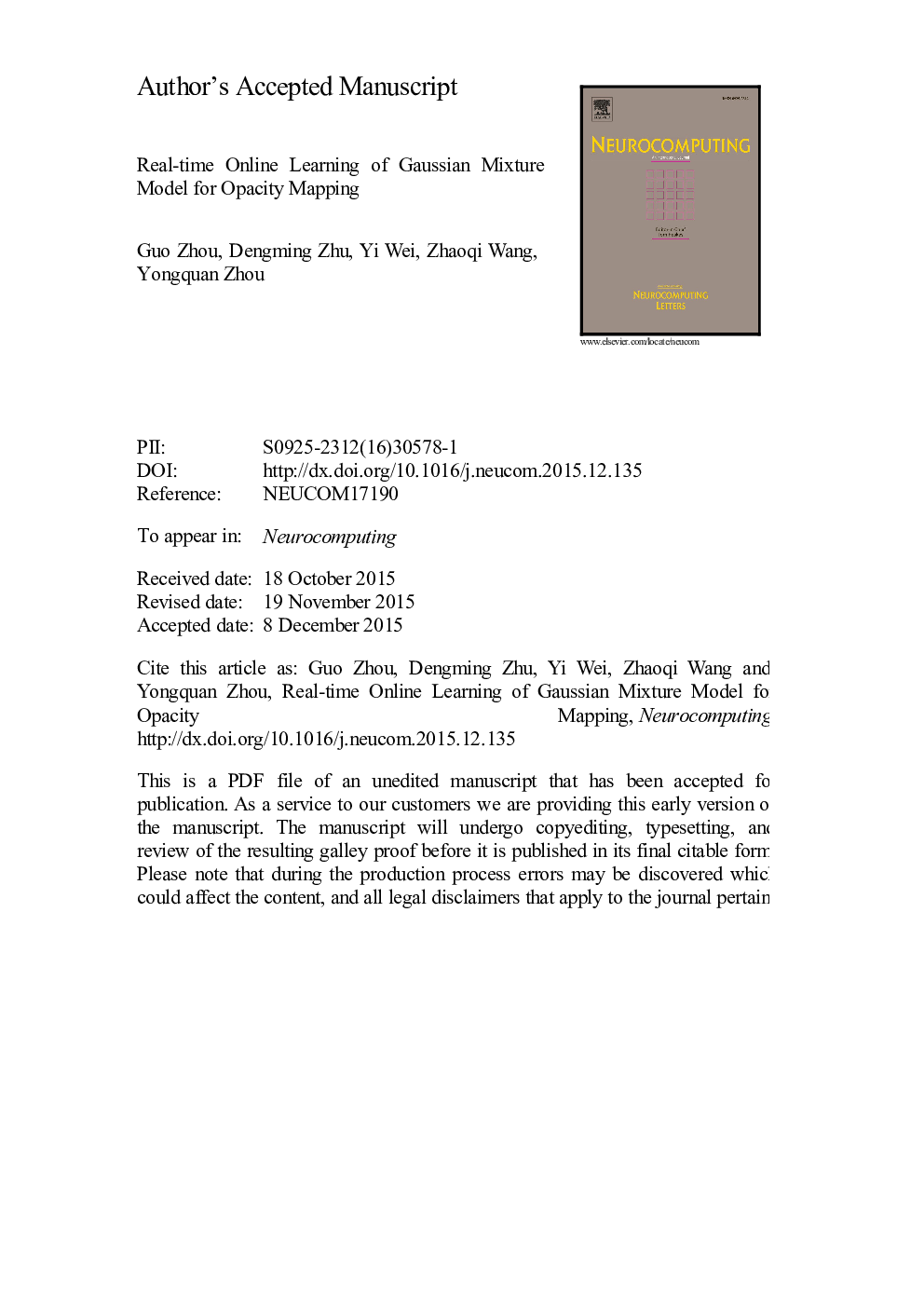| Article ID | Journal | Published Year | Pages | File Type |
|---|---|---|---|---|
| 4948581 | Neurocomputing | 2016 | 22 Pages |
Abstract
Rendering volumetric scattering in real-time is a challenge due to the complex interactions between the light and the particles in the participating media. Assuming that a ray leaving the emitter is scattered only once along its path to the sensor, we propose to represent the extinction coefficient by a Gaussian mixture model. Then the model is trained with a large number of particles colliding that ray in an online way. A low-cost updating function based on the weighted maximum likelihood estimation is derived for the weighted stepwise expectation-maximization algorithm, which is fitted into the graphics pipeline as a stage of learning. This enables all those particles to contribute to the extinction on the fly without storing and sorting them together with respect to the emitter in a geometry pass. Our approach is able to accurately reconstruct the per-pixel transmittance of the opacity map for optically thick heterogeneous media in real-time but operate in bounded memory, using the recently introduced fragment shader critical section feature of the graphics processing unit.
Keywords
Related Topics
Physical Sciences and Engineering
Computer Science
Artificial Intelligence
Authors
Guo Zhou, Dengming Zhu, Yi Wei, Zhaoqi Wang, Yongquan Zhou,
